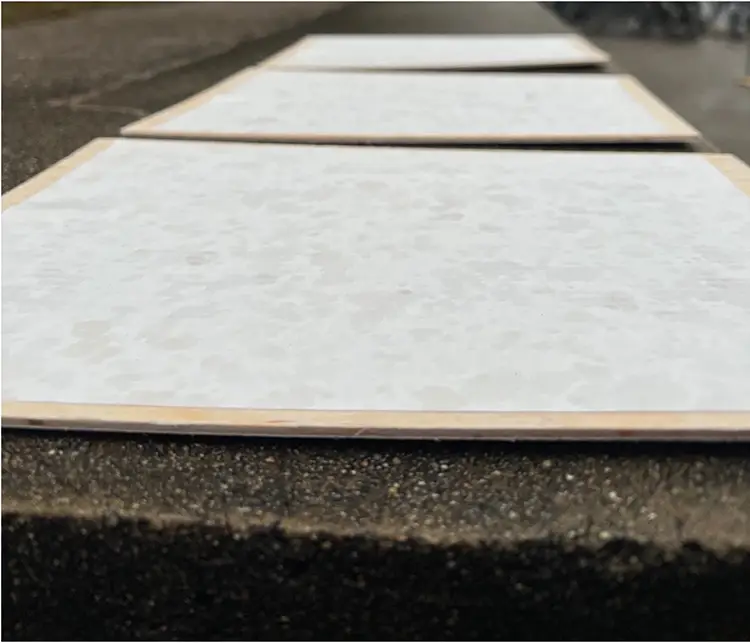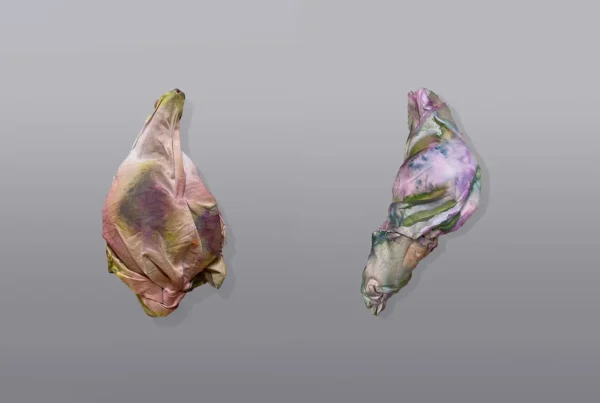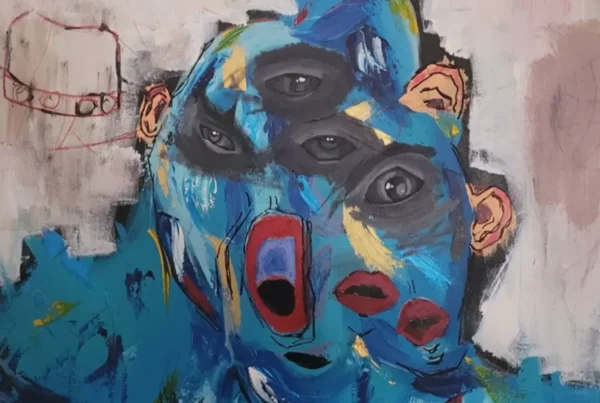“What does this rain mean? What does this rain mean?”
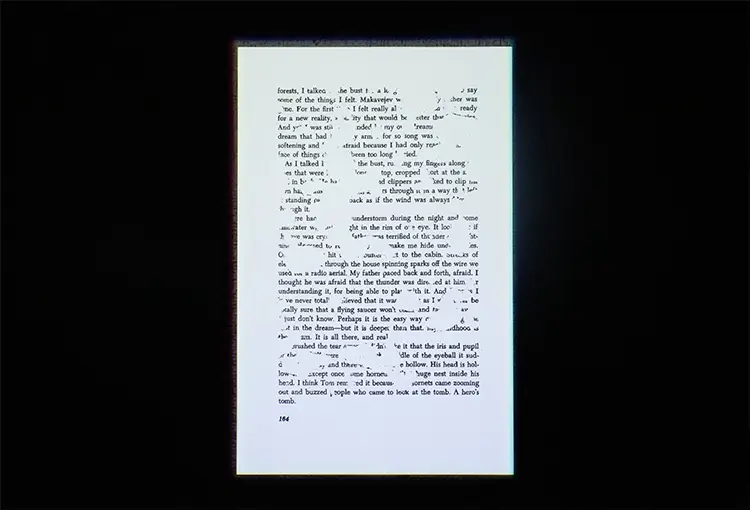
The Sky is Not Silent: Emotional Technologies in Zhanyi Chen’s Art
At the intersection of poetic speculation and infrastructural critique, Zhanyi Chen navigates a hybrid sky filled with satellites, longing, and loss. Working through small-scale installations and cross-media interventions, she investigates how environmental metaphors collide with the engineered atmosphere of modern existence. Her artistic practice gives form to a deeply personal yet intellectually expansive inquiry into how humans continue to seek connection—spiritual, emotional, and phenomenological—within technologically saturated landscapes. Recent works by Chen emerge not merely as visual installations, but as philosophical gestures that challenge how media and matter interact across environmental and psychic terrains.
Her explorations are rooted in a fascination with the emotional residues embedded in the sky. From clouds to artificial satellites, Chen engages with the sky as both infrastructure and affective field. Her work draws on the aesthetics and ideology of soft science fiction to frame speculative interventions in the way we perceive distant phenomena. Rather than reproducing science fiction’s grand narratives, she redirects its vocabulary to question how we cope with environments increasingly governed by invisible technologies. Her installations act less as monuments and more as quiet disruptions: skewing technologies from their intended purposes to craft devices that connect, confuse, or comfort.
Within this conceptual matrix, the artist has cultivated a distinct lexicon. Satellite trajectories become horoscopes, raindrops perform acts of asemic writing, and repurposed televisions transform into analog viewfinders. These works do not demand answers but instead open emotional entry points into a world shaped by power, surveillance, and soft mourning. It is not merely about critiquing technological systems—it is about living inside them, breathing within them, and making space for wonder even amid their absurdities.
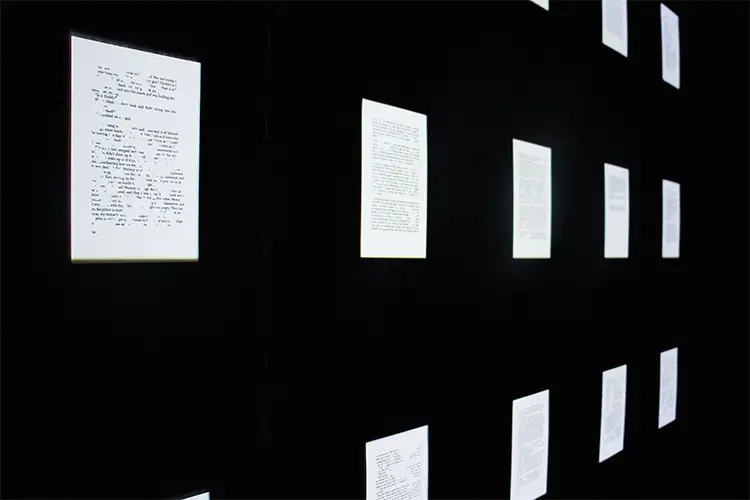
Zhanyi Chen: Where Soft Science Fiction Meets Atmospheric Mourning
Chen’s latest body of work is an ongoing study in how distant infrastructures shape human emotion. The pieces form a constellation of meditative experiments that seek meaning in the invisible architectures governing our planet. Artificial Satellite Astrology (2023) exemplifies this: using the live positioning of artificial satellites to draw astrological charts, she reframes military surveillance tools as emotional instruments. By misappropriating data streams into symbolic systems of care and intuition, the work critiques the scale and detachment of techno-scientific rationalism while offering a counterintuitive form of empathy.
Tele-Sky Unplugged (2023) extends this logic by stripping technology of its electrical lifeline. Drawing inspiration from Aldo Tambellini’s 1981 work Tele-Sky, Chen reconfigures a CRT television into a non-electronic optical device that reflects the literal sky above it. Evoking the structural aesthetics of large-format cameras, this unplugged “sky TV” no longer transmits images via satellites but instead turns back to ambient light and reflection. In doing so, the work operates as a ghost of its predecessor—a relic of media archaeology and a critique of techno-spectacle. By embedding the project within the lineage of MIT’s Sky Art movement and figures like Otto Piene and Yoko Ono, Chen reclaims the sky as both medium and message.
This methodological “unplugging” is not merely technical—it is emotional. Chen’s suspicion of the technological sublime coexists with her reliance on it as a city dweller. She lives within a paradox: the cyborg sky is both oppressive and beautiful, both remote and intimately felt. Her works neither celebrate nor demonize technological infrastructures; they instead suggest that emotional truth often arrives in interference, malfunction, or delay. Technology, when stripped of its authority, becomes vulnerable—and in that vulnerability, human connection becomes possible.
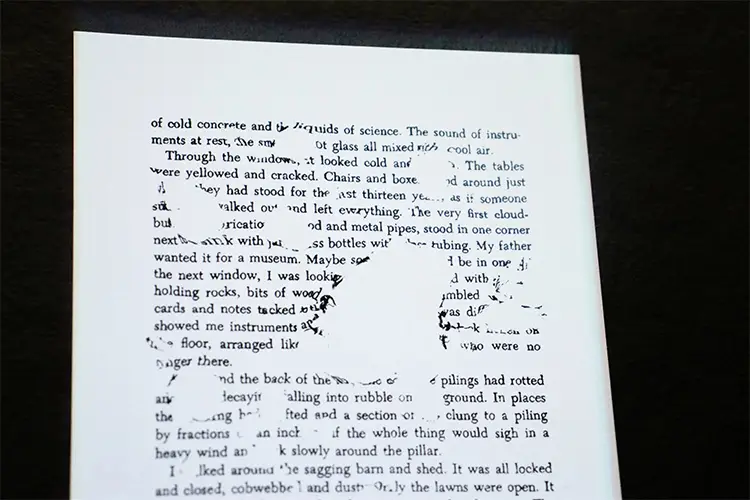
Rain Knows No Syntax: The Cloudbusting of Grief
The gravity of Chen’s practice finds its most poignant expression in Cloudbusting (Rain Poems) (2024), a work that marries personal mourning with meteorological metaphor. This piece revisits and expands upon an earlier experiment conducted in 2019, in which Chen used water transfer paper to create poems that only revealed themselves when touched by rain. At that time, she approached the work from a formalist distance, focusing on the asemic qualities of ink dispersal and the aesthetics of non-authorship. Yet in her recent revisitation, the emotional weight has shifted: rain now speaks to grief, memory, and an urgent desire to hold onto something ephemeral.
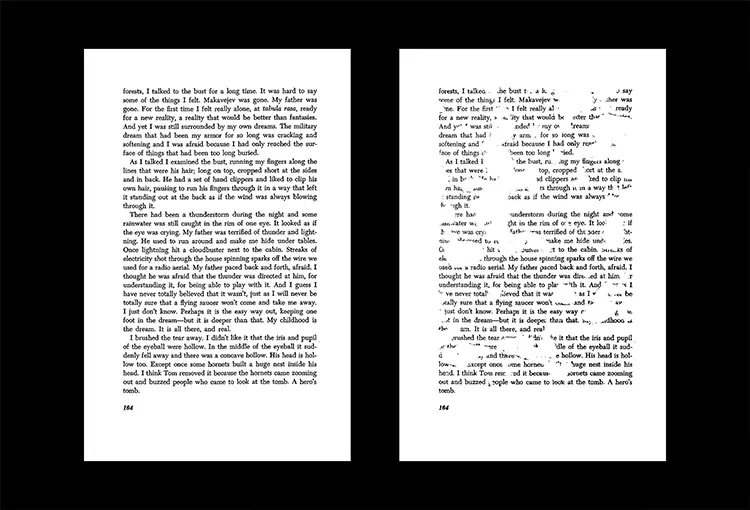
The artwork’s emotional core is grounded in a deeply intimate experience. During a traditional Chinese ritual marking the 35th day of her father’s passing, an unexpected downpour transformed a bright, clear day into one saturated with symbolism. That rainstorm, arriving precisely as monks chanted farewell sutras, became an enigmatic gesture from the environment—a fleeting moment where atmosphere seemed to speak. In this context, the rain poems evolved from abstract experimentation into vessels of mourning. They became a way for Chen to reach toward her father, to extract coherence from randomness, and to believe—if only momentarily—that weather could carry memory.
To expand this narrative, Chen integrated excerpts from Peter Reich’s memoir A Book of Dreams into the rain poems. The text recounts the story of Peter’s father, Wilhelm Reich, whose pseudoscientific experiments with a machine designed to make rain—dubbed the “cloudbuster”—serve as a poignant metaphor for loss and longing. Chen’s use of this source is not illustrative but alchemical. The rain dissolves text, the voice recedes into static, and what remains is not a message but a residue. This thematic blur between failure and beauty reflects the idea that connection is often sought in futile gestures. In the words of Trinh T. Minh-Ha, language fails through the introduction of “holes,” and in these voids, Chen finds the space for longing to breathe.
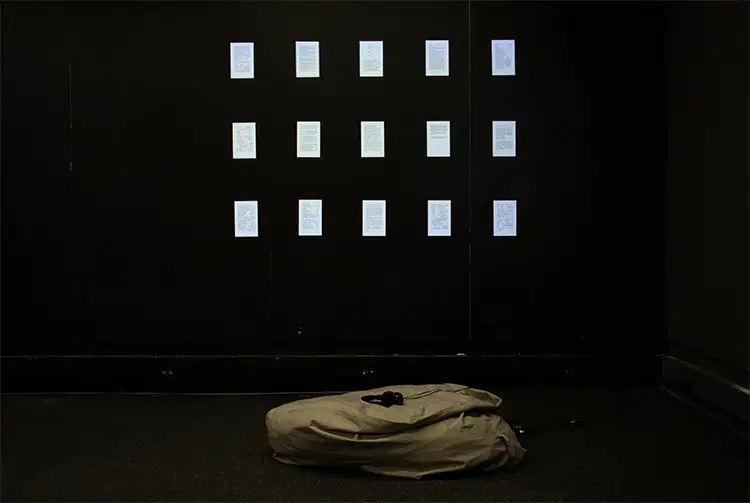
Zhanyi Chen: Technologies That Forget Their Purpose to Remember Us
A striking feature of Chen’s practice is how she purposefully disorients the function of existing technologies to prioritize human subjectivity. She calls this process a “strategic misuse,” a way of intervening in tools designed for control, measurement, or surveillance and transforming them into emotional proxies. Her reinterpretation of media expands beyond the digital or electronic: the sky, the rain, and even silence become sites of mediation. Rather than insisting that technology must be either good or bad, Chen explores how meaning can emerge when tools forget their function and become something else entirely—something tender, absurd, or haunted.
In works like Do Clouds Hate Weather Satellites? (2021), Chen addresses the contested politics of verticality. The piece reflects on how skyborne technologies assert dominance over both physical landscapes and emotional states. Through this lens, satellites are not neutral machines but agents of control, seen from below as imposing forces. Yet Chen turns this critique into poetic confrontation by suggesting that clouds themselves may resist such encroachments. These imaginative reversals are emblematic of her broader ethos: inverting dominance into dialogue, distance into desire.
Chen’s fascination with “soft science fiction” plays a central role in enabling these reversals. Unlike conventional science fiction that centers on futurist spectacle or technological superiority, soft science fiction prioritizes emotional interiors and speculative intimacy. For Chen, this means creating works where failed devices, obscure scripts, and non-functional machines still hold communicative potential. She draws influence from elemental media studies as well, particularly thinkers like John Durham Peters who argue that the environment itself is a form of media. By positioning the sky as a communicative field, Chen elevates clouds and satellites alike into co-authors of her narratives—entities through which humans might still hope to speak, remember, or feel.
Each of her installations invites viewers not only to look upward but inward. The modified TV that reflects only ceiling lights when placed indoors; the rain-drenched poems that erase themselves upon activation; the astrological satellite charts that ask the stars for care—they all echo a central belief that the sky, in all its techno-cultural contradictions, remains a deeply personal place. For Zhanyi Chen, it is less a frontier to be conquered than a mirror that holds our hopes, our memories, and our unspoken questions.
